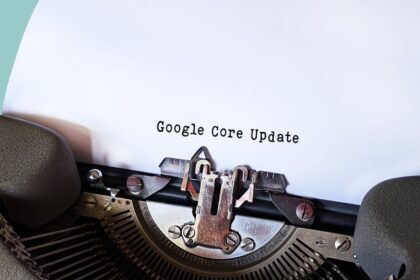Crafting effective calls to action (CTAs) transcends mere button design; it is a nuanced amalgamation of psychological principles, strategic placement, compelling copywriting, and meticulous data analysis. A CTA is the pivotal prompt guiding users toward a desired action, serving as the critical link between content consumption and conversion. Its efficacy directly correlates with the success of marketing campaigns, website performance, and overall business objectives. Understanding the intricate mechanics of a high-performing CTA involves delving into user psychology, optimizing visual hierarchy, and relentlessly testing hypotheses. The goal is to create an irresistible invitation that seamlessly aligns with user intent and provides clear value, transforming passive browsers into active participants.
Understanding the Core Purpose of a CTA
At its essence, a call to action serves as a directive, a clear instruction telling the user what to do next. However, its true power lies in its ability to motivate and persuade. Effective CTAs are not just functional; they are aspirational, implying a benefit or solution to a user’s need or problem. They are the conduits through which engagement translates into tangible results, whether that’s a sale, a lead, a download, or an increased subscription count. Without a well-crafted CTA, even the most compelling content or innovative product can fall flat, leaving users adrift without a clear path forward. The absence of a strong CTA is akin to opening a brilliant store but forgetting to install a door. It’s about defining the next step in the customer journey, providing clarity, and reducing cognitive load for the user. Every piece of marketing collateral, from a social media post to a detailed landing page, implicitly or explicitly demands a user response, and the CTA is the precise articulation of that demand, presented as an enticing opportunity.
The Psychological Underpinnings of Effective CTAs
The true mastery of CTA creation lies in leveraging fundamental principles of human psychology. People are driven by innate desires, fears, and cognitive biases that, when understood, can be subtly influenced to encourage desired behaviors.
- Urgency and Scarcity: These powerful motivators tap into the fear of missing out (FOMO). Phrases like “Limited Time Offer,” “Only 3 Left,” “Ends Tonight,” or “Shop Before They’re Gone” create a perceived need for immediate action. The psychological principle is that the perceived value of something increases when its availability is restricted. This pushes users past hesitation by creating a finite window for decision-making. However, authenticity is key; false scarcity can erode trust.
- Benefit-Driven Language: Users aren’t interested in what you do; they’re interested in what you can do for them. CTAs that highlight the direct benefit or solution a user will gain – “Get Your Free Ebook to Boost Conversions,” “Start Saving Money Today,” “Unlock Exclusive Content” – are far more compelling than generic commands. This taps into the self-interest principle, answering the fundamental question: “What’s in it for me?”
- Trust and Social Proof: In a world saturated with information, trust is a valuable commodity. CTAs become more credible when backed by social proof. Phrases like “Join 50,000 Satisfied Customers,” “Read Our 5-Star Reviews,” or incorporating trust badges (e.g., secure payment logos, industry certifications) reduce perceived risk and encourage commitment. Humans are inherently social creatures, prone to follow the actions of others, especially when uncertain.
- Loss Aversion: This principle suggests that the pain of losing something is psychologically more powerful than the pleasure of gaining an equivalent item. CTAs can subtly leverage this by framing the absence of action as a potential loss. For example, instead of “Sign Up for Our Newsletter,” consider “Don’t Miss Out on Exclusive Deals.”
- Commitment and Consistency: Once a person commits to a small action, they are more likely to commit to larger, consistent actions later. Micro-CTAs that ask for a minor commitment (e.g., “Learn More,” “Watch Video”) can pave the way for a more significant conversion like a purchase or sign-up. This creates a psychological trajectory of agreement.
- Authority: People are more likely to follow the advice of perceived experts or authoritative figures. While less direct for standalone CTAs, implied authority (e.g., “Recommended by Industry Leaders”) can add weight to the call.
Integrating these psychological triggers is not about manipulation but about aligning with natural human decision-making processes to provide a more persuasive and intuitive user experience.
Fundamental Principles of CTA Design and Copywriting
The effectiveness of a CTA hinges on its clarity, compelling language, and visual prominence. Each element must work in concert to guide the user seamlessly towards conversion.
- Clarity and Conciseness: A CTA must be instantly understandable. Users should know exactly what will happen when they click and what benefit they will receive. Avoid jargon or ambiguity. “Download Your Free Guide to SEO Success” is superior to “Access Document.” Short, punchy, and direct phrases work best. The fewer words, the clearer the message, provided the essential benefit is still communicated.
- Action-Oriented Language (Strong Verbs): Begin CTAs with powerful, imperative verbs that directly instruct the user. Examples include “Get,” “Start,” “Discover,” “Join,” “Buy,” “Download,” “Explore,” “Subscribe,” “Claim,” “Reserve,” “Build,” “Create,” “Watch.” These verbs convey immediacy and direct purpose, minimizing hesitation.
- Value Proposition: Every CTA should implicitly or explicitly communicate the “What’s in it for me?” (WIIFM) factor. Users are motivated by perceived value. Instead of “Submit,” use “Get Instant Access.” Instead of “Sign Up,” use “Unlock Your Potential.” The value proposition can be enhanced by specific numbers or outcomes: “Increase Sales by 30%.”
- Visual Prominence: A CTA must stand out from its surroundings.
- Color Contrast: Use a color for the CTA button that contrasts sharply with the background and surrounding elements. This makes it pop without clashing. Avoid using too many bright colors elsewhere on the page that might compete for attention.
- Size and Shape: Make the button large enough to be easily clickable on all devices, especially mobile, but not so large that it feels aggressive or disproportionate. Rounded corners often perform better than sharp, square ones as they are perceived as more inviting and less harsh.
- Whitespace: Surround the CTA with ample whitespace. This isolation draws the eye directly to the button, preventing visual clutter and improving readability.
- Placement: Strategic placement is crucial. Common effective placements include above the fold, at the end of relevant content sections, or strategically within the flow of an article where the user’s interest is piqued.
- Personalization: Where possible, personalize CTAs. Using “Your” or “My” can create a sense of ownership and relevance. “Get Your Free Quote” or “Build My Dream Website” often perform better than generic alternatives because they directly address the user and imply a customized experience. Dynamic CTAs that change based on user history or demographics can significantly boost relevance and conversion rates.
- Addressing Friction/Risk Reduction: Acknowledge and mitigate potential user hesitations. Phrases like “No Credit Card Required,” “Cancel Anytime,” “Free Trial,” “Money-Back Guarantee,” or “Zero Obligation” directly address common anxieties, reducing perceived risk and encouraging commitment. This provides a safety net for users, making the action feel less daunting.
Strategic Placement and Contextual Relevance
The placement of a CTA is as critical as its design and copy. A perfectly crafted CTA can fail if it’s placed where users don’t expect it, can’t easily find it, or if it disrupts their natural browsing flow. Contextual relevance ensures the CTA appears at the opportune moment when a user is most receptive to taking the next step.
- Above the Fold: For primary conversions (e.g., product sales, main lead generation forms), placing a CTA immediately visible without scrolling (above the fold) is often recommended. This ensures immediate visibility and actionability for users who know what they’re looking for. However, for complex products or services requiring more explanation, a CTA above the fold might be too premature.
- Within Content (Blog Posts, Articles): For content marketing, CTAs should be naturally woven into the narrative flow.
- Mid-Content CTAs: After presenting a problem and beginning to offer a solution, a subtle CTA like “Download our comprehensive guide to [solution]” can capture interested readers. These work well after a significant amount of value has been provided, positioning the CTA as a logical next step.
- End-of-Content CTAs: At the conclusion of a blog post, a CTA is expected. This is where readers who have consumed the full content are likely looking for the next step. Offer something highly relevant to the article’s topic, like “Subscribe for More Insights,” “Explore Related Products,” or “Register for Our Webinar on This Topic.”
- Landing Pages: Landing pages are designed with a singular conversion goal, so the CTA should be the focal point. Use strong visual hierarchy to guide the user’s eye directly to the CTA button. Often, having multiple CTAs (one above the fold, one mid-page, one at the bottom) is effective, provided they lead to the same primary action, offering multiple opportunities without overwhelming the user.
- Email Marketing: Emails are highly personal channels, and CTAs here should reflect that. The primary CTA should be visually distinct and placed strategically, often shortly after the value proposition is presented. Secondary CTAs can offer alternative paths. Personalized email content naturally lends itself to personalized CTAs. An effective email will often have the CTA repeated in different forms (text link, button, image link) to cater to varying user scanning habits.
- Social Media: Social platforms require concise, direct CTAs due to character limits and rapid consumption. “Learn More,” “Shop Now,” “Sign Up,” “Download,” “Book Now” are common. The CTA should align perfectly with the ad creative or post content. Hashtags and relevant emojis can also draw attention to the call.
- Video Marketing: CTAs within videos (e.g., end screens, annotation cards) or in the video description are crucial. They leverage the engagement built during the video. For instance, after demonstrating a product, a CTA to “Buy Now” or “Visit Our Store” becomes highly relevant.
- E-commerce Product Pages: The “Add to Cart” or “Buy Now” CTA is paramount. It needs to be highly prominent, reassuring (e.g., “In Stock,” “Free Shipping”), and ideally positioned near product details, pricing, and reviews. Secondary CTAs might include “Add to Wishlist” or “Compare Products.”
- Pop-ups and Overlays: While potentially intrusive, exit-intent pop-ups or time-delayed overlays can be highly effective. The key is to offer significant value (e.g., a discount, exclusive content) in exchange for the interruption and to make it easy to close the pop-up if the user isn’t interested. Ethical use involves ensuring they don’t block essential content or appear too frequently.
Contextual relevance also means aligning the CTA’s message with the user’s current stage in the buyer’s journey. A user early in the awareness stage might respond to “Learn More,” while a user in the decision stage needs “Get a Free Quote” or “Buy Now.”
Advanced Strategies: Multi-Step and Dynamic CTAs
Moving beyond static, single-action buttons, advanced CTA strategies leverage user data and iterative engagement to optimize conversion pathways.
- Multi-Step CTAs: Sometimes, a single, high-commitment CTA (“Buy Now” for an expensive product) can be overwhelming. A multi-step CTA breaks down the conversion process into smaller, less intimidating steps. For example, instead of “Sign Up for Our Complex Software,” start with “Explore Features” or “Watch a Demo,” leading to a second CTA like “Start Your Free Trial,” and finally “Upgrade Your Account.” Each step involves a lower commitment, progressively guiding the user down the conversion funnel. This is particularly effective for high-value purchases, complex services, or long forms, by reducing cognitive friction.
- Dynamic CTAs: These CTAs change based on specific user data or behavior, making them highly personalized and relevant.
- User Segment: A returning customer might see “Reorder Your Favorite Product” while a new visitor sees “Shop Our Bestsellers.”
- Referral Source: Users arriving from a blog post about email marketing might see “Download Our Email Marketing Toolkit,” whereas those from a social ad about web design might see “Get a Free Web Design Consultation.”
- Previous Interactions: If a user has already downloaded an ebook, the CTA might change from “Download Ebook” to “Schedule a Demo.”
- Geolocation: A local business might display “Find Our Store Near You” to users in their area.
- Time of Day/Week: Offering a “Chat Now” CTA during business hours versus “Leave a Message” after hours.
- A/B Test Results: Automatically serving the winning CTA variant based on ongoing testing.
Dynamic CTAs require robust analytics and CRM integration but can significantly boost conversion rates by delivering the most relevant message at the precise moment.
- Segmented CTAs: Similar to dynamic CTAs but often based on pre-defined audience segments rather than real-time behavior. For instance, an email campaign for B2B clients might have a CTA for “Request a Corporate Demo,” while a B2C segment receives “Shop Now.” This ensures the call aligns with the specific needs and interests of the target group.
- Exit-Intent CTAs: These are triggered when a user is about to leave a page (e.g., mouse movement towards the browser’s close button). They offer a last-ditch effort to re-engage the user, typically with a high-value offer like a discount code, a free guide, or an exclusive subscription offer. The key is to make the offer compelling enough to prevent abandonment.
- “No-Risk” CTAs: These CTAs specifically highlight guarantees or benefits that mitigate user perceived risk, encouraging them to proceed. Examples: “Try for Free,” “No Obligation Quote,” “Cancel Anytime,” “30-Day Money-Back Guarantee,” “Free Returns.” They address potential objections head-on, building trust and confidence.
These advanced strategies move beyond a one-size-fits-all approach, recognizing that different users, at different stages and in different contexts, require tailored prompts to convert effectively.
Crafting Compelling CTA Copy: Beyond the Obvious
The words chosen for a CTA are perhaps its most critical component. Generic or uninspired copy leads to apathy; compelling copy ignites action. Moving beyond the ubiquitous “Click Here” or “Submit” requires a deep understanding of persuasion and user motivation.
- Benefit-Driven Language is Paramount: Always articulate what the user gains.
- Instead of: “Download” -> Use: “Get Your Free Marketing Plan”
- Instead of: “Sign Up” -> Use: “Unlock Exclusive Member Benefits”
- Instead of: “Buy Now” -> Use: “Start Saving Time Today”
The verb should promise an outcome, not just an action.
- Addressing Pain Points: Frame the CTA as a solution to a problem. If your audience struggles with low website traffic, a CTA like “Generate More Leads Today” directly addresses that pain.
- Using Numbers and Specifics: Quantifiable benefits are highly persuasive.
- “Increase Your Conversions by 20%”
- “Save 5 Hours Per Week”
- “Join 10,000 Happy Customers”
Specific numbers lend credibility and tangibility to the promise.
- Emotional Triggers: Tap into emotions like desire, excitement, relief, or curiosity.
- “Discover Your Dream Home” (desire)
- “Experience True Freedom” (relief/desire)
- “Uncover Hidden Insights” (curiosity)
- Personal Pronouns (You, Your, My): Using “you” or “your” makes the CTA feel directly addressed to the user, creating a personal connection. “Get Your Free Trial” or “Customize Your Plan.” In some cases, letting the user express their intent with “My” can be powerful: “Build My Profile,” “Send Me the Offer.” This gives the user ownership of the action.
- Creating a Sense of Ownership: When the user feels they are taking control or making a choice, they are more likely to engage. “Choose Your Plan,” “Start Building Now.”
- Conciseness and Action Orientation: While benefit-driven, avoid overly long CTAs. A powerful verb followed by the core benefit is usually sufficient. Keep it to 3-5 words if possible, but prioritize clarity over brevity if more words are needed to convey the benefit.
- A/B Testing Copy Variations: Never assume what copy will perform best. Test different verbs, different benefit statements, different lengths, and different emotional appeals. A/B testing is the ultimate arbiter of effective copy. For example, “Get Started” vs. “Start Your Free Trial Now” vs. “Claim Your 14-Day Free Access.” Small changes can yield significant conversion lifts.
Design and Visual Elements of High-Performing CTAs
Beyond the words, how a CTA looks and feels is paramount. Visual elements dictate prominence, readability, and user interaction.
- Color Psychology: Colors evoke specific emotions and associations.
- Green: Often associated with “go,” growth, nature, and money, making it a popular choice for positive actions like “Buy Now” or “Sign Up.”
- Orange/Yellow: Energetic, cheerful, and attention-grabbing. Frequently used for “Call Now,” “Limited Time Offer,” or “Get Started.”
- Red: Can signify urgency, importance, or stop. Used sparingly for “Last Chance” or highly important warnings, but must be careful not to imply danger.
- Blue: Trustworthy, calming, professional. Good for “Learn More” or corporate actions.
The most important aspect of color is contrast. The CTA color must stand out against its background to achieve immediate visibility. A bright green button on a white page will pop, but a pale blue button on a dark blue page will blend in.
- Button Shape and Size:
- Size: Buttons should be large enough to be easily tapped on touch devices (mobile users often have large fingers!) and clicked with a mouse. There’s no single perfect size, but adequate padding around the text is crucial.
- Shape: Rounded corners tend to be perceived as softer, more inviting, and less harsh than sharp, rectangular corners. Some studies suggest they perform better. However, consistency with overall brand design is also important.
- Whitespace: Ample negative space around a CTA button isolates it from surrounding elements, drawing the eye directly to it. This reduces visual clutter and makes the CTA appear more inviting and less imposing. It also helps users quickly scan and identify the primary action.
- Imagery and Icons: Subtle icons (e.g., a shopping cart, a download arrow, a play button) can reinforce the CTA’s meaning and improve visual recognition, especially for users who scan rather than read every word. Imagery surrounding the CTA, if relevant and high-quality, can also enhance its appeal and contextual understanding. For instance, a picture of a smiling customer next to a “Join Our Community” button.
- Directional Cues: Visual elements that subtly direct the user’s eye towards the CTA can be highly effective. This includes:
- Arrows: A simple arrow pointing to the button.
- Gaze Direction: If an image of a person is used, having them look towards the CTA can guide the user’s eye.
- Lines or Paths: Design elements that naturally lead the eye to the button.
- Micro-animations and Hover Effects: Subtle animations when a user hovers over or clicks a CTA button can provide instant feedback, confirm interactivity, and make the experience more engaging. A slight color change, a subtle lift, or a ripple effect can enhance the user experience and convey responsiveness.
Ultimately, CTA design is about creating a visual anchor that is unmistakable, appealing, and clearly communicates the next step in the user journey. It’s about leveraging visual hierarchy to make the desired action the most prominent element on the page.
Measurement, Testing, and Continuous Optimization
The creation of an effective CTA is not a one-time task; it’s an ongoing process of hypothesis, experimentation, and refinement. Data-driven insights are indispensable for continuous improvement.
- Key Metrics for CTA Performance:
- Click-Through Rate (CTR): The percentage of users who clicked on the CTA out of the total who viewed it. A high CTR indicates the CTA is visually prominent and its copy is compelling enough to pique interest.
- Conversion Rate: The percentage of users who completed the desired action after clicking the CTA. This is the ultimate measure of a CTA’s effectiveness, indicating not just clicks but successful conversions. A high CTR with a low conversion rate might suggest a misleading CTA or a poor post-click experience.
- Bounce Rate (Post-Click): If users click a CTA but immediately leave the destination page, it suggests a disconnect between the CTA’s promise and the actual landing page experience.
- Engagement Metrics (Time on Page): While less direct, observing time spent on pages containing CTAs can provide context regarding user interest leading up to the click.
- A/B Testing Methodologies: This is the cornerstone of CTA optimization.
- Single Variable Testing: Test one element at a time (e.g., button color, copy, size, placement). This allows for clear attribution of performance changes to specific modifications.
- Multivariate Testing: For more complex scenarios, this tests multiple combinations of changes simultaneously. While powerful, it requires significantly more traffic to achieve statistical significance.
- Hypothesis Formulation: Before testing, form a clear hypothesis: “Changing the CTA copy from ‘Learn More’ to ‘Get Your Free Guide’ will increase CTR by X% because it offers a clearer benefit.”
- Statistical Significance: Ensure tests run long enough and gather enough data to be statistically significant. Don’t make decisions based on preliminary, potentially random fluctuations. Tools provide confidence levels to validate results.
- Heatmaps and Scroll Maps: These visual analytics tools provide insights into user behavior:
- Heatmaps: Show where users click on a page. Hotter areas indicate more clicks, revealing if CTAs are being noticed and interacted with.
- Scroll Maps: Indicate how far down users scroll on a page. This helps determine optimal CTA placement, especially for longer content, ensuring CTAs aren’t hidden from view.
- User Feedback and Surveys: Directly asking users why they did or didn’t click a CTA can uncover qualitative insights that quantitative data might miss. On-site surveys or follow-up questionnaires can be invaluable.
- Iterative Optimization Process: CTA optimization is cyclical:
- Analyze Data: Identify underperforming CTAs or areas of opportunity.
- Formulate Hypotheses: Based on data and psychological principles, propose changes.
- Implement Tests: Run A/B tests.
- Evaluate Results: Determine the winning variant.
- Implement Winning Variant: Make the winning CTA the default.
- Repeat: Continuously seek new opportunities for improvement.
- Understanding the Full Funnel: A CTA doesn’t operate in a vacuum. Its effectiveness is also dependent on the content leading up to it and the experience immediately following the click. If a CTA has a high CTR but a low conversion rate on the landing page, the problem might lie with the landing page’s relevance, clarity, or design, not just the CTA itself. Optimizing the entire conversion funnel is critical.
By embracing a data-driven, iterative approach to CTA design and testing, businesses can continually refine their prompts, unlocking higher conversion rates and maximizing the return on their marketing efforts. It is a commitment to continuous improvement, recognizing that user behavior and market dynamics are constantly evolving.
Common Mistakes to Avoid in CTA Crafting
Even with a strong understanding of best practices, it’s easy to fall into common pitfalls that undermine CTA effectiveness. Avoiding these mistakes is crucial for maximizing conversion potential.
- Vague or Generic Language: “Click Here,” “Submit,” “Enter,” or “Go” provide no information about the benefit or purpose of the action. They offer no motivation and fail to differentiate the CTA from generic links. This ambiguity increases cognitive load and reduces user confidence. Always prioritize clarity and benefit over brevity alone.
- Lack of Clear Value Proposition: If a user doesn’t understand what they will gain by clicking, they won’t click. A CTA like “Learn More” can be too generic if not paired with context that clearly indicates what will be learned. The value must be explicit or immediately obvious from the surrounding content.
- Poor Placement and Visibility:
- Too Low on the Page: If a CTA is buried below multiple scrolls of content, many users will never see it.
- Hidden by Other Elements: Overlapping elements, busy backgrounds, or insufficient whitespace can make a CTA hard to spot.
- Inconsistent Placement: Erratic placement across pages can confuse users who expect a CTA in a certain logical area.
- Too Many Competing CTAs: Overloading a page with multiple, equally prominent CTAs can create “analysis paralysis,” leading users to click nothing at all. Focus on one primary CTA and, if necessary, one or two less prominent secondary CTAs.
- Ignoring Mobile Responsiveness: A CTA that looks great on a desktop might be tiny, unclickable, or awkwardly placed on a mobile device. Buttons must be easily tappable with a thumb, and text legible on smaller screens. Many conversions now happen on mobile, so mobile optimization is non-negotiable.
- Disjointed Post-Click Experience: The journey doesn’t end when a user clicks the CTA. The landing page or subsequent step must deliver on the promise of the CTA. If a CTA says “Download Your Free Ebook” and the user lands on a generic “thank you” page without an immediate download link, they’ll become frustrated and potentially abandon. The experience immediately after the click must be seamless, relevant, and fulfill the expectation set by the CTA.
- Lack of Urgency or Scarcity (When Appropriate): While not every CTA needs urgency, failing to leverage it when it is relevant (e.g., for limited-time offers, events) can result in procrastination and missed conversions. If an offer is time-sensitive, make that crystal clear.
- Excessive Friction: Asking for too much information too soon (e.g., a lengthy form for a simple download) or requiring multiple clicks to reach the desired outcome creates friction. Each extra field or step increases the likelihood of abandonment. Optimize forms for brevity and clarity.
- Inconsistent Branding: While a CTA should stand out, it should still broadly align with the brand’s visual identity and tone of voice. A quirky, playful brand shouldn’t have a stiff, corporate-sounding CTA, and vice-versa.
- Failure to Test and Iterate: Relying on intuition alone without A/B testing is a recipe for mediocrity. What you think works often doesn’t, and seemingly minor changes can yield significant results. Continuous testing is the only way to truly optimize.
Avoiding these common pitfalls requires a user-centric mindset, attention to detail, and a commitment to data-driven decision-making. Each mistake represents a missed opportunity for conversion and a potential frustration point for the user.
Examples of Highly Effective CTAs and Their Analysis
Observing real-world examples helps solidify the principles discussed. Let’s analyze a few categories:
- SaaS (Software as a Service):
- Example: “Start Your Free 14-Day Trial – No Credit Card Required”
- Analysis:
- Action-Oriented Verb: “Start” implies immediacy and ease.
- Benefit-Driven: “Free 14-Day Trial” offers a tangible, time-bound benefit (risk-free testing of the software).
- Risk Reduction: “No Credit Card Required” directly addresses a common friction point, significantly lowering the barrier to entry. This is a powerful psychological trigger, alleviating financial commitment fears upfront.
- Clarity: It’s clear what the user gets and what they need to do.
- E-commerce:
- Example: “Add to Cart – Get Free Shipping on Orders Over $50” (Displayed below the main “Add to Cart” button or as a hovering message)
- Analysis:
- Primary Action: “Add to Cart” is the standard, clear e-commerce CTA.
- Incentive/Value Add: “Get Free Shipping on Orders Over $50” acts as a persuasive secondary message or micro-CTA, encouraging users to reach a higher order value. It highlights an immediate financial benefit.
- Prominence: The “Add to Cart” button is usually the most prominent on the page, with good color contrast.
- Contextual Relevance: Appears directly on the product page where purchasing decisions are made.
- Content Publishing/Lead Generation (Ebook/Newsletter):
- Example: “Download Your Free Ebook: 10 Strategies to Boost SEO Today!”
- Analysis:
- Action-Oriented Verb: “Download” is clear.
- Personalization: “Your Free Ebook” creates a sense of ownership.
- Specific Value Proposition: “10 Strategies to Boost SEO Today!” clearly states the content and the immediate, quantifiable benefit. It addresses a specific pain point (low SEO).
- Free Offer: “Free” removes financial barriers.
- Urgency/Immediacy (Implied): “Today!” subtly suggests actionable insights for immediate application.
- Service-Based Business:
- Example: “Request a Free Consultation – Solve Your [Specific Problem] with an Expert”
- Analysis:
- Action-Oriented Verb: “Request” is polite yet clear.
- Risk Reduction: “Free Consultation” eliminates cost as a barrier.
- Benefit-Driven & Problem/Solution Focused: “Solve Your [Specific Problem] with an Expert” directly addresses a user’s pain point and promises an expert solution. This provides high perceived value for the consultation.
- Authority (Implied): “Expert” subtly builds trust and confidence in the service provider.
- Community/Subscription:
- Example: “Join Our Growing Community of [Number] Members – Start Connecting Now!”
- Analysis:
- Action-Oriented Verb: “Join” is inviting.
- Social Proof: “Growing Community of [Number] Members” leverages the power of social proof, indicating popularity and trustworthiness.
- Benefit: “Start Connecting Now!” highlights the core value of joining the community (networking, engagement).
- Urgency/Immediacy: “Now!” encourages immediate action.
These examples demonstrate how specific language, value propositions, and psychological triggers are combined to create CTAs that are not just functional, but highly persuasive, driving users towards the desired conversion with clarity and compelling motivation. The most effective CTAs are not just buttons, but carefully crafted micro-campaigns in themselves, summarizing the entire value proposition and guiding the user to their next beneficial step.










